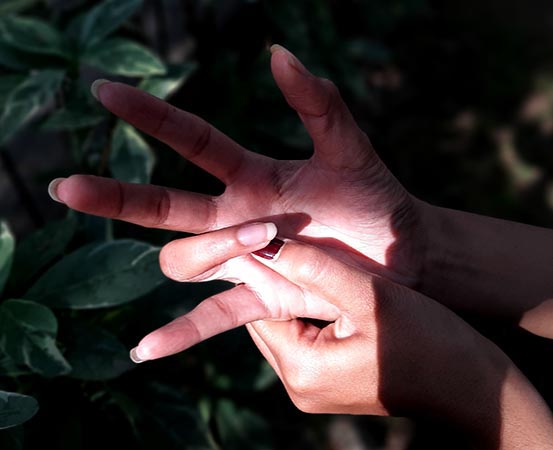
Chronic diabetes can literally ‘trigger’ the fingers, causing them to get locked in a curled position once bent. The affected fingers then don’t straighten easily. Instead, they assume the hooked shape of a finger when someone is about to pull the trigger of a gun.
This condition, called trigger finger, is quite painful since the underlying factor is high inflammation at the tendons of the palms.
People with prolonged episodes of poorly managed blood glucose levels usually have a higher risk of developing this condition. Also, trigger finger is more common among people who
- predominantly work with their hands (such as office workers and musicians) and
- must consistently grip, or grasp on to, some objects as part of their daily routine (such as farmers, drivers and industrial workers).
What is trigger finger?
“The affected finger gets stuck in a bent position and the individual will be unable to straighten it,” says Dr Jashan Vishwanath, consultant orthopedic, Jaslok Hospital & Research Centre, Mumbai. “The bent finger will be positioned like how it would be if one were to pull the trigger of a gun. And it can appear in both the hands and in multiple fingers, [but is] unlikely to appear on the toes.”
Trigger finger, also known as stenosing tenosynovitis, is basically caused by severe inflammation in the tendons. It also affects the synovial membrane, the lining between the bones and tendons that lubricates the joints to alleviate friction and ensure smooth movement. In simple terms, the inflammation leads to thickening and swelling of the tendon.
Dr Vishwanath says an individual with a trigger finger is likely to experience a ‘pop’ sound while trying to straighten the bent or curled-up finger. Trigger finger is not exactly similar to rheumatoid arthritis — the latter generally affects the cartilage in the joints, whereas trigger finger affects the tendons connecting the bone and muscles in the hands (which also controls the finger and wrist movements). Some symptoms of these conditions overlap with each other. Trigger finger is often confused with arthritis and gout since all three are caused due to severe inflammation.
Diabetes and trigger finger
“Chronic hyperglycemia (high blood sugar levels) is the predominant reason that diabetics develop trigger finger,” says Dr Ashwitha Shruti Dass, physician, Manipal Hospitals, Bengaluru. She says that in people who have diabetes for over a decade, the insulin-producing pancreatic beta cells tend to decrease in number. The high blood sugar caused as a result leads to structural changes in collagen (provides structural strength) in tendons, causing inflammation. In people with diabetes, trigger finger is more common because when sugar levels are not in control, injuries and infections flare up faster (high inflammation).
According to a recent study — led by researchers from Lund University, Sweden (Mattias Rydberg et al., 2022) and published in Diabetes Care in August 2022 — people with both type 1 and type 2 diabetes were found to be at higher risk for developing trigger finger. The researchers had examined data from the Swedish National Diabetes Register after cross-linking it with the health care registry from Skane region in southern Sweden from 2004 to 2019.
Out of the 9,682 people with type 1 diabetes and 85,755 with type 2 diabetes, 757 and 2,152 individuals respectively were found to have trigger finger. The study concluded that high blood sugar levels increased the risk of being affected by trigger finger in both men and women in the groups with type 1 and type 2 diabetes.
Early signs of trigger finger
“Pain, swelling, stiffness and feeling of a bump on the palmar side (on the palm) are the initial indicators,” says Dr Vishwanath. According to him, trigger finger is more likely to happen in the morning because the finger might have had minimum movement during sleep time.
Dr Vishwanath says since trigger finger cannot be diagnosed with any blood tests, clinical examination by a specialist (physician or orthopedic) is a must.
Treatment of trigger finger
Dr Dass recommends that people with diabetes should always seek medical help if they develop inflammation and pain in the finger joints. Short courses of anti-inflammatory medication and physiotherapy are often prescribed to control the condition initially. If that doesn’t work, some injections and a minor surgery ensure that the thickening of tendons do not restrict finger movement.
Takeaways
Chronic diabetes and poor control of high blood sugar levels are high-risk factors for developing trigger finger. According to experts, people living with uncontrolled diabetes for over a decade are at a higher risk of developing trigger finger due to severely hampered insulin secretion from the pancreatic beta cells. Lifestyle modifications, especially those related to diet and physical activity, are recommended for tackling trigger finger. Medical help also has to be sought on a timely basis since trigger finger conditions and symptoms often overlap with those of arthritis and gout.

















